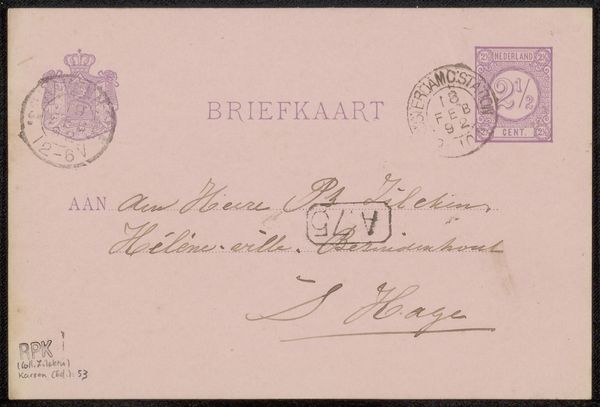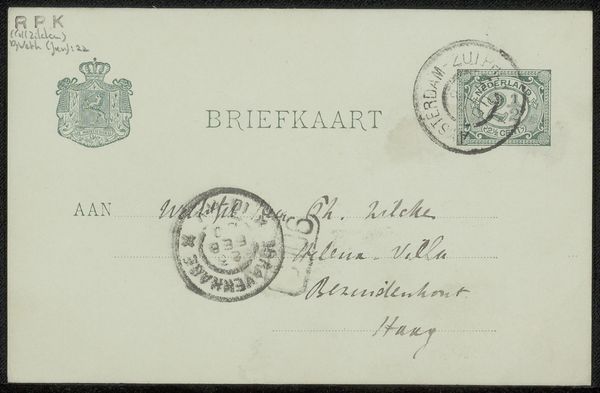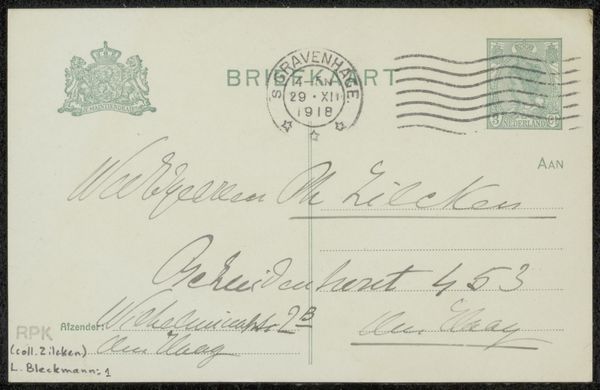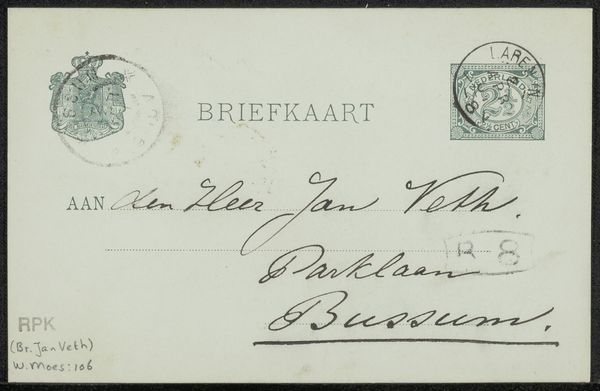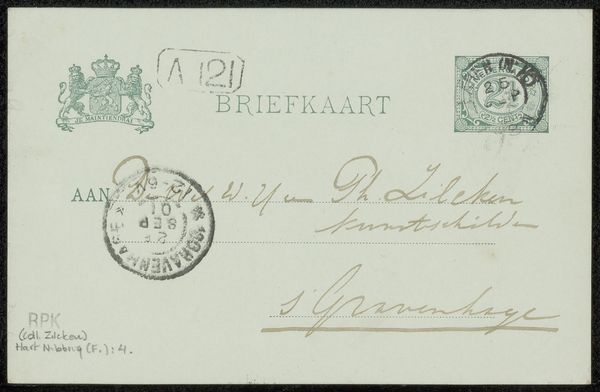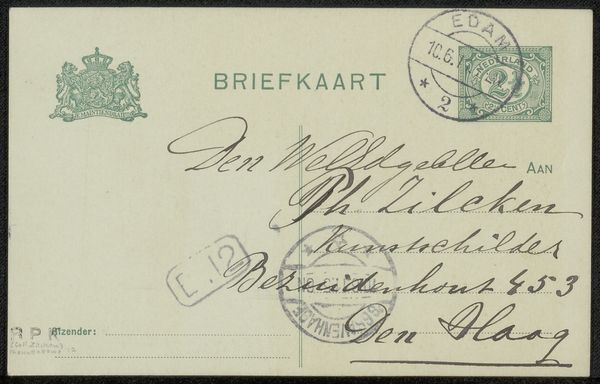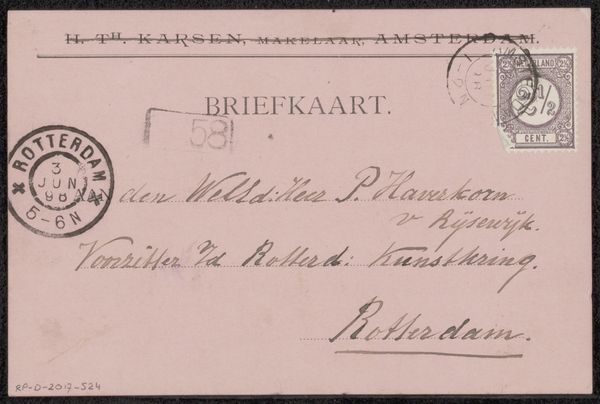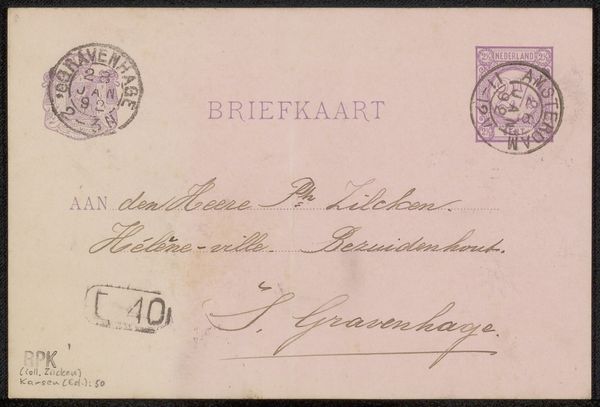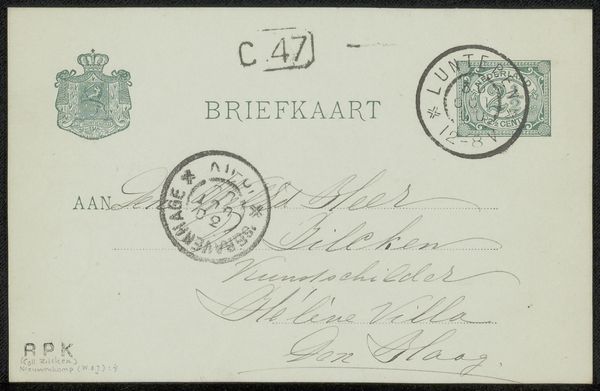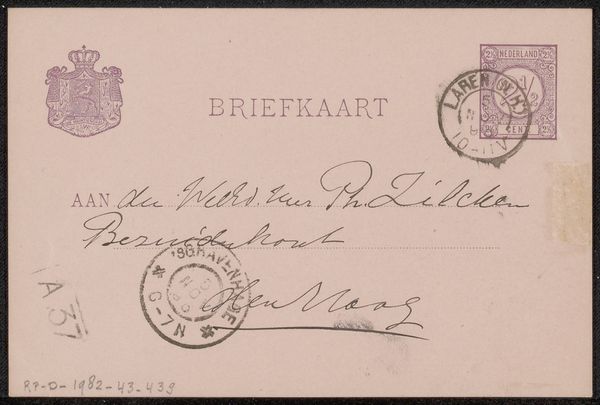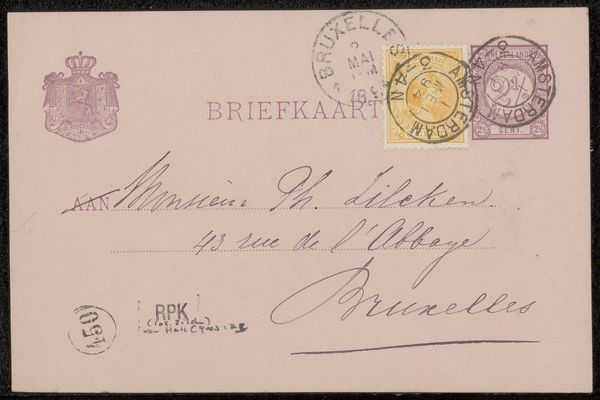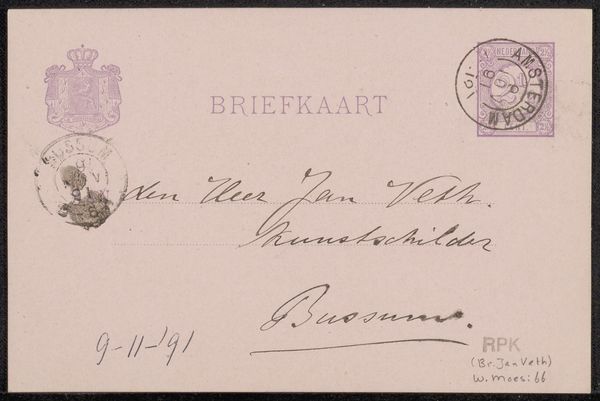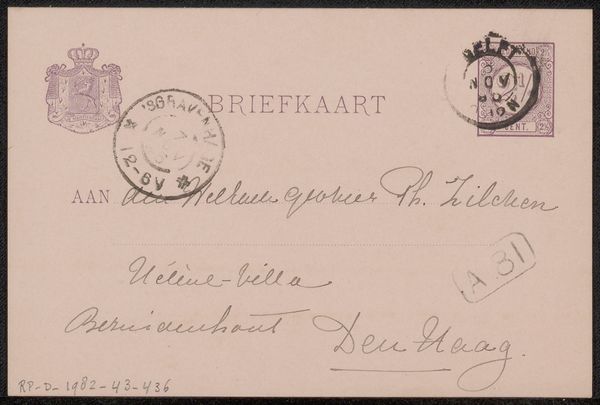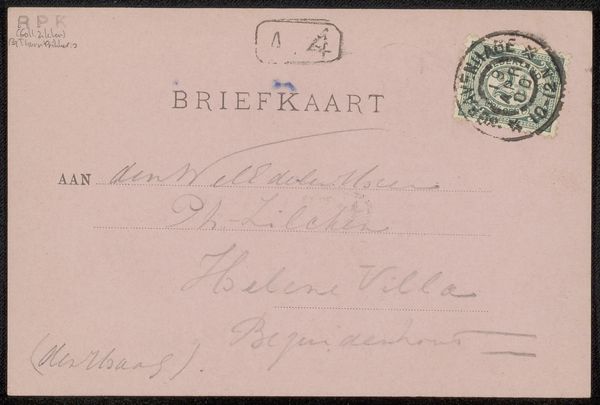
drawing, paper, ink
#
drawing
#
hand-lettering
#
hand drawn type
#
hand lettering
#
paper
#
ink
#
linocut print
#
calligraphy
Copyright: Rijks Museum: Open Domain
Editor: This is "Briefkaart aan Philip Zilcken," a drawing in ink on paper by Wijnand Otto Jan Nieuwenkamp, created before 1927. It’s essentially the back of a postcard. What strikes me immediately is the graphic quality and all of the layers of text. How would you interpret this work, looking at its formal properties? Curator: Focusing on form, one must note the interplay between the block-printed word "BRIEFKAART" and the cursive inscription layering across the visual space. The artist utilises these graphic planes against the background and postal markings to create something that pushes beyond its intended use as simply a carrier of correspondence. How do these features contribute to your understanding of its aesthetic quality? Editor: Well, the cursive script provides a softer counterpoint to the rigid block letters. It makes the postal markings appear integrated as artistic features rather than necessary elements for postage. But wouldn't we want to look into who Zilcken was? Curator: Context could enhance our knowledge. But before understanding the what, consider the how. Examine the composition: notice the subtle linear outlines hinting at a frame within the frame, guiding the eye through its visual pathways. Are these lines deliberate? And how might those enhance the overall design? Editor: They are light, as if the artist changed his mind…but I see your point about directing my focus. Without them, my eye jumps around without finding rest. The composition is strengthened by their quiet work, leading me through the artist’s visual arguments. Curator: Exactly. Consider how that connects with theories around artistic intention… ultimately we cannot confirm the intent, but by contemplating form and intention, we can understand more about visual communication and how artists develop structure. Editor: I learned that it's useful to concentrate on internal elements of art before looking outside of it!
Comments
No comments
Be the first to comment and join the conversation on the ultimate creative platform.
